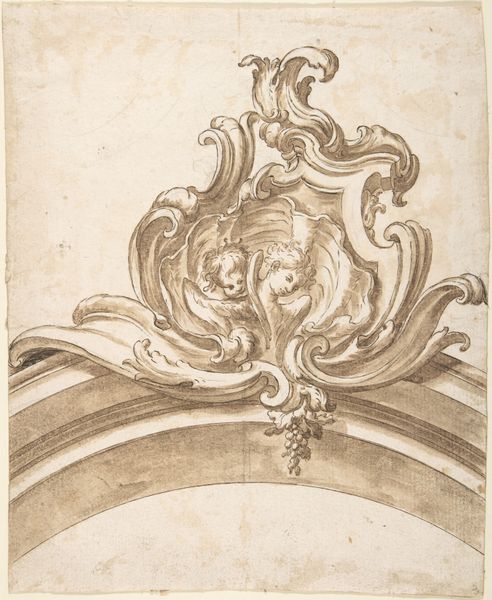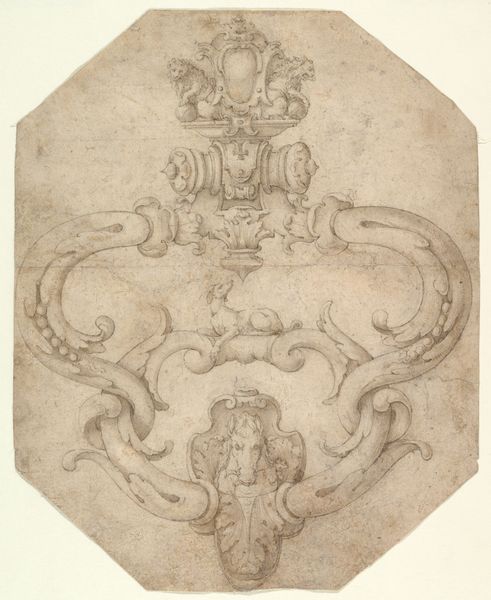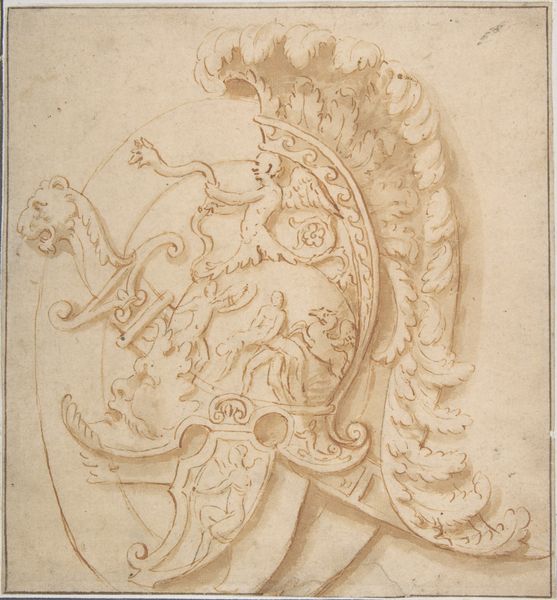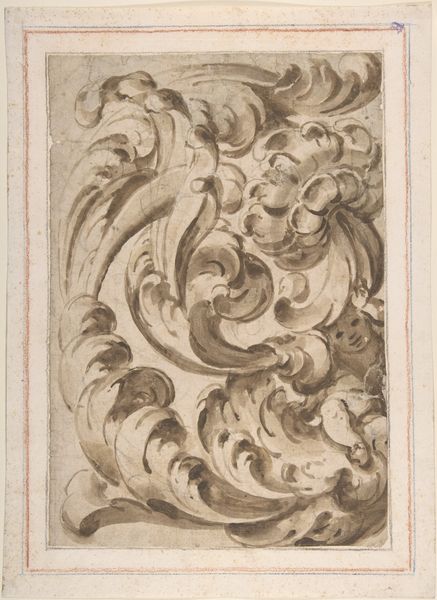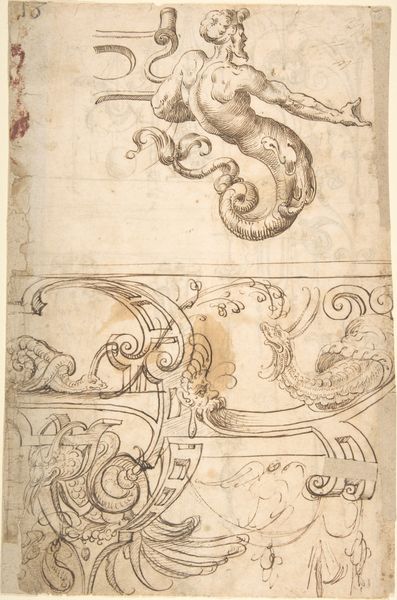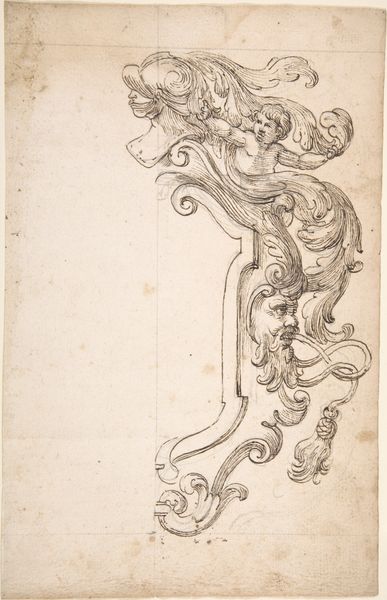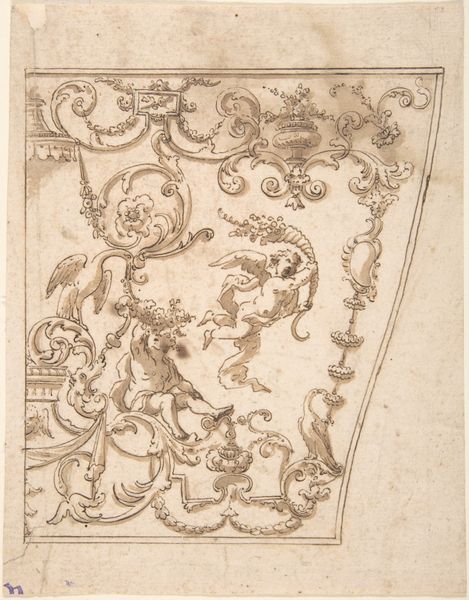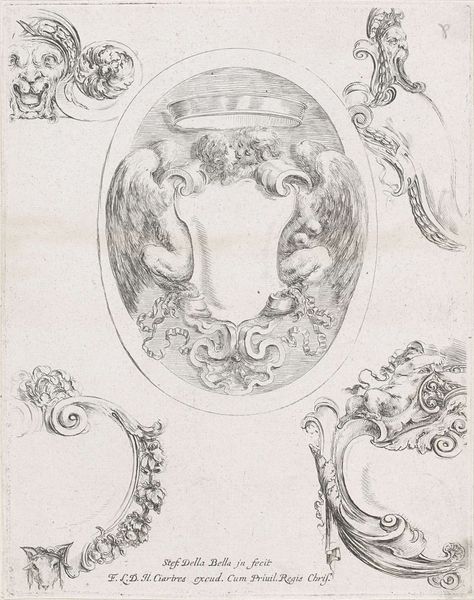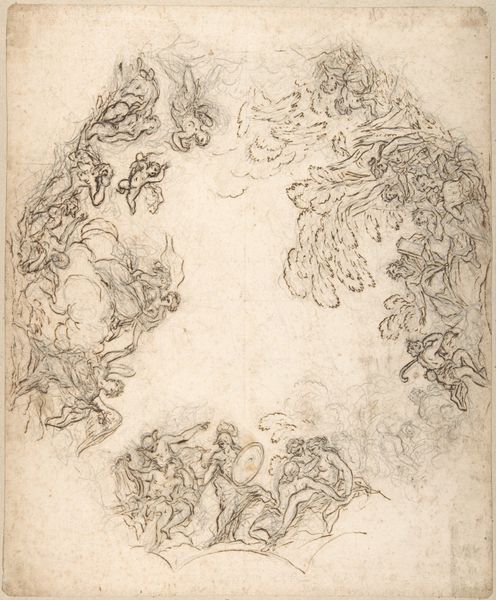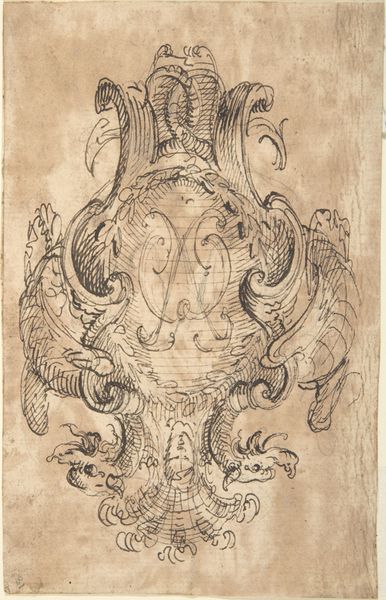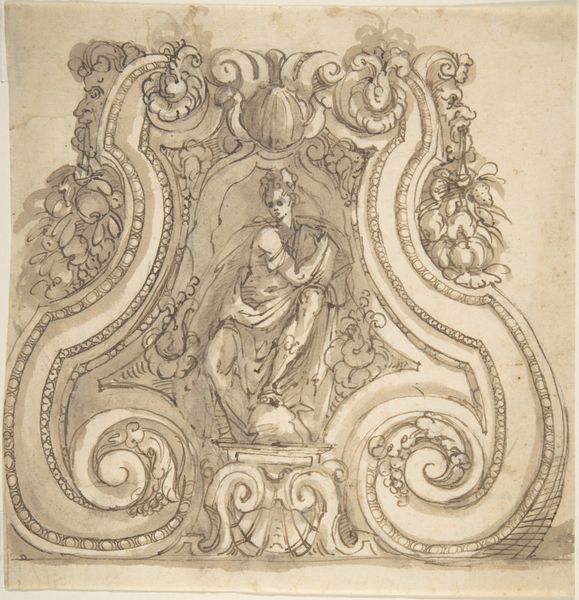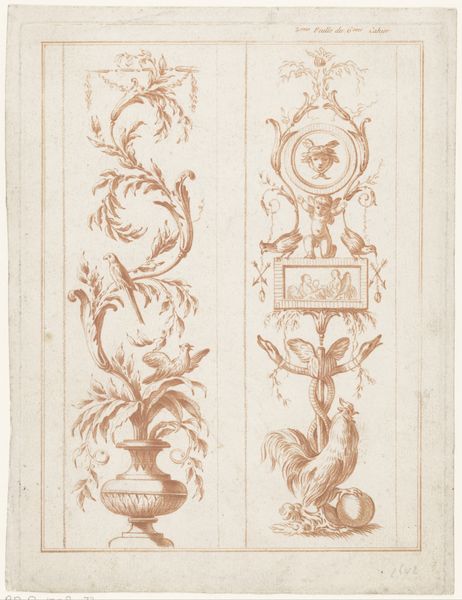
drawing, print
#
drawing
# print
#
charcoal drawing
#
form
#
11_renaissance
#
italian-renaissance
Dimensions: 7-1/2 x 6-3/8 in. (19.1 x 16.2 cm)
Copyright: Public Domain
Curator: What a marvelous drawing. This is a sketch entitled "A Vase," made sometime between 1500 and 1600. The anonymous artist rendered it using primarily charcoal and print techniques. Editor: My immediate impression is one of delicate grandeur. The swirling lines, rendered in reddish-brown, give it a dynamic yet refined sensibility. It feels almost like a fleeting impression. Curator: Yes, look closely at the materiality. The paper has aged, the lines are somewhat faded. I find myself considering the role of drawing in the Renaissance workshop. Was this a preparatory sketch for a more permanent work, perhaps in metal or ceramic? What sort of labor went into creating similar vases, especially with that finial? Editor: Interesting questions. What strikes me is how the artist utilized shading and cross-hatching to create a sense of three-dimensionality on a two-dimensional surface. The artist's intent seems to explore pure form through shape and tone to achieve the effect of light dancing on metal. The vase isn't simply depicted. Its essence is investigated through pure optical effects. Curator: I see your point. However, I also ponder on what these vessels were used for. Objects such as these held cultural currency and served social rituals. Was this vase specifically commissioned for some elite gathering? By using drawing and printmaking mediums, and specifically charcoal as an inexpensive method of prototyping an object, how did this affect production? Editor: Perhaps, but observe how the artist prioritizes certain features. See the meticulous depiction of the acanthus scrolls versus the relative sketchiness of the base? A conscious decision guides our eye, encouraging a closer inspection of the aesthetic over the functional. Curator: A compelling thought! Thinking of it this way, one begins to consider how notions of art versus craft were taking shape during this time period. It’s not merely the object; it’s the value ascribed to the mode of representation that adds a layer to it. Editor: Indeed, an object lesson on seeing beyond the object itself! Curator: Precisely! I appreciate that consideration for visual representation allows this vessel’s spirit to continue informing audiences and challenging modes of consumption hundreds of years later.
Comments
No comments
Be the first to comment and join the conversation on the ultimate creative platform.
